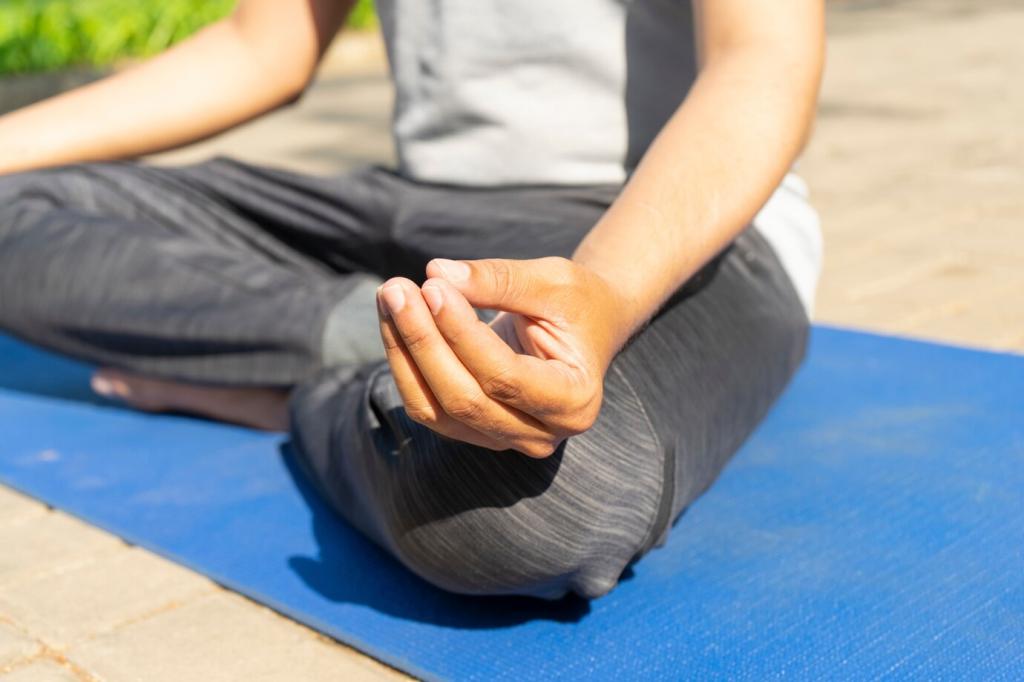
Unlocking the Benefits of Guided Meditation for Athletes
Chosen theme: Benefits of Guided Meditation for Athletes. Step into a focused, supportive space where science, stories, and actionable routines help competitors sharpen attention, speed recovery, and perform with calm confidence. Subscribe for weekly athlete-centered mind training you can use before practice, after games, and in the moments that matter most.
Laser Focus Under Pressure
Breath as a Reliable Anchor
In high-pressure moments, guided breath cues return your attention to a steady rhythm. Counting inhales and exhales creates a simple mental handle, reducing mental noise while re-centering your eyes, posture, and decision-making on what is happening right now.
Body Scan to Quiet the Crowd
A body scan invites you to notice tension from jaw to calves, then soften it. Athletes describe a surprising hush that follows, as if the stadium volume drops and they can finally hear their coach’s plan and their own confident voice again.
Focal Points and Re-Set Routines
Guided scripts teach brief re-set rituals between plays: one breath, one keyword, one look to a focal spot. This consistent routine becomes a mental safety rail, stopping overthinking from snowballing and returning you to clear execution quickly.
Recovery That Actually Restores
Slow, guided breathing stimulates the vagus nerve and encourages a parasympathetic shift. Many athletes notice improved heart rate variability and lower resting tension after consistent practice, translating to fresher legs, steadier energy, and less irritability during heavy training blocks.
Recovery That Actually Restores
Replacing late-night scrolling with a 10-minute guided body scan calms mental chatter and primes sleep. The ritual signals your brain that the day is finished, helping you fall asleep faster and wake up with a clearer head and less soreness.


Managing Stress, Jitters, and Big-Game Nerves
Reframing Pre-Competition Energy
Guided scripts help you label butterflies as fuel, not danger. By noticing sensations without judgment, you convert jitters into readiness, so adrenaline becomes a supportive push rather than a distracting surge that steals coordination and clarity.
From Cortisol Spikes to Calm Clarity
A calm guiding voice, extended exhaling, and paced counting signal safety to your body. Over time, your system learns to dial down stress hormones more quickly, shortening the duration of spirals and creating more stable emotional baselines on game day.
Confidence Cues You Can Trust
Personalized mantras and guided imagery become portable tools. When doubt shows up, repeating a practiced phrase and visual anchor steadies posture, breathing, and technique, allowing your training to surface exactly when you need it most.
Injury Rehab: Healing the Body, Training the Mind
Guided sessions teach you to distinguish pain from threat, reducing fear-based tension that amplifies discomfort. Breathing into sensation while staying curious can decrease protective guarding and help you move more smoothly through prescribed rehab exercises.
Injury Rehab: Healing the Body, Training the Mind
Mental rehearsal activates many of the same brain regions used during movement. Imagining precise angles, timing, and foot placement helps preserve coordination, so when you return, the skill feels familiar rather than brand-new or awkward.
Injury Rehab: Healing the Body, Training the Mind
Rehab can feel endless. Guided reflections break progress into meaningful milestones and reconnect you to your why. Athletes report steadier commitment, fewer skipped sessions, and a healthier relationship with their timeline and expectations.
Team Culture and Leadership Through Calm
Two minutes of guided breathing at center court can sync a team’s tempo. Players arrive less scattered, hear instructions more clearly, and build a shared sense of calm that carries into spacing, timing, and unselfish decision-making.

Data, Habits, and Sustainable Consistency
Log minutes meditated alongside RPE, sleep quality, and HRV. Over a month, notice patterns: better focus after morning sessions, or faster recovery with post-practice wind-downs, then double down on what your data actually supports.

Data, Habits, and Sustainable Consistency
Attach a five-minute guided session to an existing routine: lacing shoes, foam rolling, or taping ankles. By linking it to something you already do, you remove willpower friction and make calm a predictable part of your process.

The Sprinter’s False Start Redemption
After a devastating false start, a sprinter used a guided micro-reset before the re-run: three breaths, one focus word, one visualization. She ran a season’s best, later saying the reset felt like clicking into a track she already knew.

Youth Team Finds Its Rhythm
A youth soccer coach added a two-minute guided breath before scrimmages. Pass completion rose, arguments dropped, and shy players spoke up more. Parents noticed kids leaving practice calmer, with energy left for homework and family dinner.

Marathoner Beats the Mile 22 Spiral
At the wall, he shifted from panic to presence using a practiced body scan and cadence cue. The spiral loosened, stride smoothed, and he negative-split the final 10K, crediting the guided ritual for rescuing his race plan.

